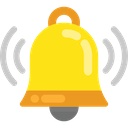Tubeless tires on spoked wheels & tubes in tubeless tires.
Aside from the problem of keeping 48 to 72 spoke holes sealed there are a couple of other considerations.
Perhaps most important; The wheel rim profile will be different on a wheel designed for tubeless use than on a rim designed for tubed use. Rim profiles for tubeless use have different seat angles & a retaining shoulder (hump) to prevent the tire from separating from the wheel during very hard cornering or side impacts. Without this retaining profile, any slight separation of rim & tire will let a lot of air out in a hurry. This is especially important if you are driving the car hard.
Most wheels designed for tube use do not have or need this retaining shoulder because slight momentary separation of the tire from the rim does not let air out of the tube.
Another consideration is, if using a tube in any rim, having a valve stem that does not move around in it's rim hole & wear the stem. There are nylon bushings that can be installed in the rim holes to provide a snug, abrasion free fit with the valve stem, if needed.
Finally, most tubeless tires have internal ribs which tend to wear the tubes. The "best" tubes, designed for use in radial tires, are of heavier construction to resist this wear. Radial inner tubes. Actually marked so on the valve stems.
As with any tube, new tubes that are slightly under sized so that they can stretch to the tire's inner profile, will prevent any wrinkles or folds in the tube which greatly increases the life of the tubes. An old tube will be permanently stretched to fit the old tire & will likely not fit a new tire as it should.
Tubeless tires have a thicker inner liner to take place of the tube. This thicker construction combined with the addition of a tube will cause the tire to run a bit hotter than if it did not have the tube. In practice, this has not proved to be a problem.
There are hundreds of tires, on spoked wheels, being run with & without tubes, each has it's proponents.
D

 Hi Guest!
Hi Guest!

 smilie in place of the real @
smilie in place of the real @
 Pretty Please - add it to our Events forum(s) and add to the calendar! >>
Pretty Please - add it to our Events forum(s) and add to the calendar! >> 

